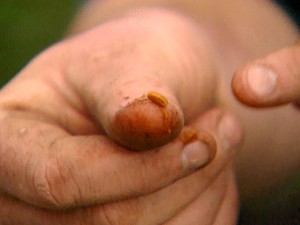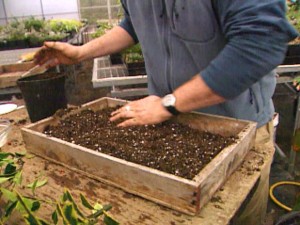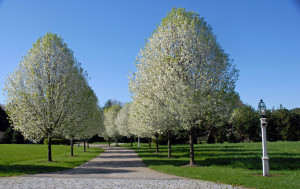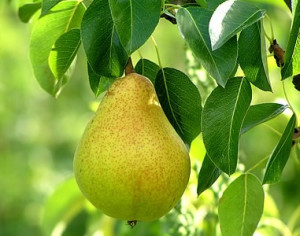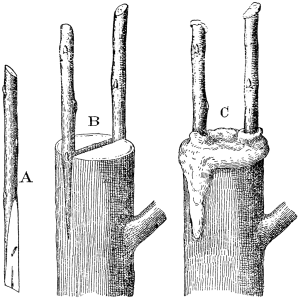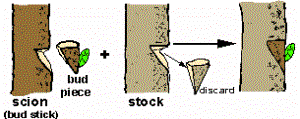American Holly (Ilex opaca)
image from: https://www.arborday.org/trees/treeguide/TreeDetail.cfm?ItemID=1071
Introduction:
The American Holly or Ilex opaca is considered a symbol of Christmas cheer. The American Holly is an evergreen so it has lasting beauty year round. It is also considered an ornamental tree which means that it adds visual interest and beauty to the landscape. It is best known for its use in Christmas wreaths. The year round tree provides cover and food for birds and has more than 1000 cultivars developed today. There are roughly 20 American holly species, 120 Asian species, and 200 English varieties. The American Holly has been around since the days of Pilgrims. it had been used by Native Americans to create various wood products and the berries were often used as buttons or for barter. It is believed that George Washington loved the American Holly and planted many around the White House.The popularity has continued as it was adopted as the Delaware state tree.
image from: http://www.fcps.edu/islandcreekes/ecology/american_holly.htm
The Ilex opaca is grows best in hardiness zones 5-9. This shrub grows best in full sunlight or partial shade. More than 4 hours of direct sunlight are best. Acidic, well drained, loamy soils provide the best habitat for growth. The American Holly prefers normal moisture, but can withstand flood and drought conditions. They are relatively easy to grow and can thrive in temperatures as low as 15 below zero. American hollies can adapt to less than ideal conditions.
A mature plant is 40-50 feet tall and 18-40 feet wide, but they grow slowly, at a rate of 12-24 inches per year. The leaves have a leathery texture and are 2-4 inches in length. They stay green all year long and have sharp tips. While they often grow in a pyramidal shape, they can be trimmed to create an attractive hedge. The greenish or cream flowers produce a pleasant aroma and give way to orange-red, berry-like fruit that is somewhat toxic to humans, but loved by a variety of songbirds. Hollies are either male or female. Female hollies produce large amounts of berries, but require a male holly in the vicinity to pollinate it.
Propagation Methods:
There are three ways to propagate hollies.
The first is by grafting. The best way to graft a holly is to use the T-budding method. This grafts the desired buds onto a developed rootstock. Grafting is often used in holly production because many varieties have been developed by producers and do not grow true to seed, so the only way to keep these varieties in production. The downside to grafting is the possibility of failure of the graft union and that it takes time and understanding to be completed.
The second is by cuttings. The cuttings must come from the canes of new growth. The cuttings should be taken when the plant is dormant. However, as with most hardwood cuttings, rooting hormone is necessary. Hardwood cuttings are harder and fail more often than other cutting types. This why they are often used less.
The last is by seeds. Seeds are an easy and cheap way to propagate hollies, but limit the varieties produced and can be time consuming.
Steps to Seed Propagation:
- Obtaining the Seed: The seeds should be taken from healthy trees. The best time to collect seeds is in the late fall. The berries typically grow from September to November. It is important to remove the berries before they begin to dry and shrivel, but not before the seeds have a chance to fully develop. To collect the seed the skin should be removed. This can be accomplished by smashing the berry. The seed should then be washed to remove the pulpy insides of the berry. The guts of the berry often have chemicals that prohibit germination. To test viability the seeds can be placed in water. The viable seeds will be heavier and sink in water. Typically in nature, the berry would simply fall to the ground and sit over winter and the cold combined with rain would activate enzymes to eat those chemicals that prohibit germination. Rinsing the seed in cold water mimics this process and prepares the seed for germination.
- Storage of the Seed: Once the seed is removed from the berry, it needs to be cleaned and stored properly. This means that the seed should be free of berry particles and placed in a contained at 4 degrees C. The container needs to be moist and should contain peat moss. Storage with proper temperature and adequate moisture levels will extend the seed viability for possibly years. If the seed is not going to be stored, it can be planted right away.
- Stratification of the Seed: Stratification is the necessary process to help seeds overcome their dormancy. Stratification helps simulate natural winter conditions. A box with drainage holes can be filled with about 1 to 2 inches of sand and the seeds placed on top. The box should then be burried just below the soil level in a shaded area. Another option is to fill a weather resistant flat with soiless potting medium and place the seeds on top. The seeds should then be covered with a layer about an inch thick of soiless medium in a level manner. The flats can simply be sat outside over winter and you should see some germination by spring. If not the seeds can be left out for a second winter. Seed propagation can take time. There is also no guarantee that the seeds will be the same variety as the parent plant.
- Planting the Holly Seed: Seed germination is a very slow process. The American Holly can take up to a year fully germinate. Seeds should be planted in the springtime after an overwintering has occurred. The seeds should be covered with no more than a half inch of soil when planted. The seedling will do best in shady conditions for the first 2 years. It is important that the seedlings are kept free of weeds and grass growth during this time. Once the American Holly has reached 2 years of age, it can be transplanted. Transplanting should occur in the late fall as the tree is going dormant or early spring right before the new growth begins to grow.
Images from: http://www.hgtv.com/design/outdoor-design/landscaping-and-hardscaping/propagating-holly
Conclusion:
American Holly trees are best known for their role in Christmas decor for the holiday season. The tree growth is meant to be harvested around this time, so this is when the bright berries are present and the leaves remain green. There are many ways to propagate the beautiful berry bushes, but by far the most common is by seeds. However, seeds have many limitations when it comes to producing desirable varieties. Other methods such as cuttings offer a better guess at what type of traits will show up in the seedlings. Either way the American Holly has played an important role in the past and continues to be a beautiful accent to winter landscapes either as large hedges or in wreathes and swags for holiday decor.
Resources:
Directions for Holly Propagation Using Grafting. (n.d.). Retrieved November 19, 2015, from http://homeguides.sfgate.com/directions-holly-propagation-using-grafting-87675.html
Hartmann, H. (2011). Techniques of Propagation by Cuttings. In Hartmann & Kester’s Plant Propagation: Principles and Practices (8th ed.). Upper Saddle River, NJ: Prentice Hall/Pearson.
Home Home. (n.d.). Retrieved November 19, 2015, from https://www.arborday.org/trees/treeguide/TreeDetail.cfm?ItemID=1071
Propagating Holly – How To Grow Holly From Cuttings. (2009, May 1). Retrieved November 19, 2015, from http://www.gardeningknowhow.com/ornamental/shrubs/holly/holly-cuttings.htm
Propagating Holly. (n.d.). Retrieved November 19, 2015, from http://www.hgtv.com/design/outdoor-design/landscaping-and-hardscaping/propagating-holly

